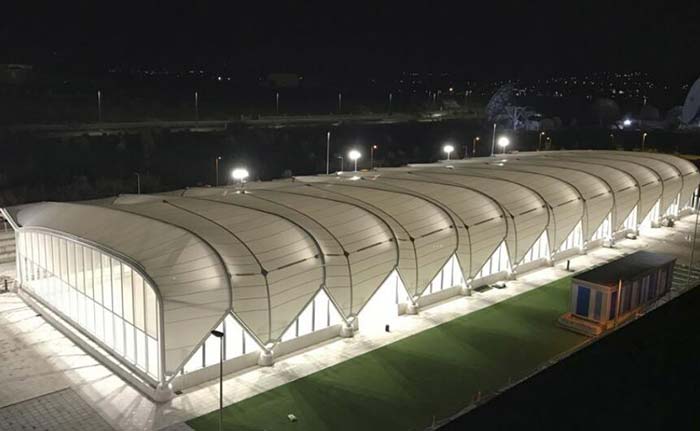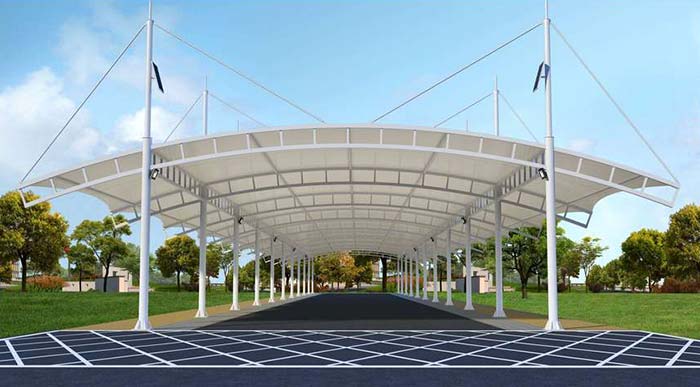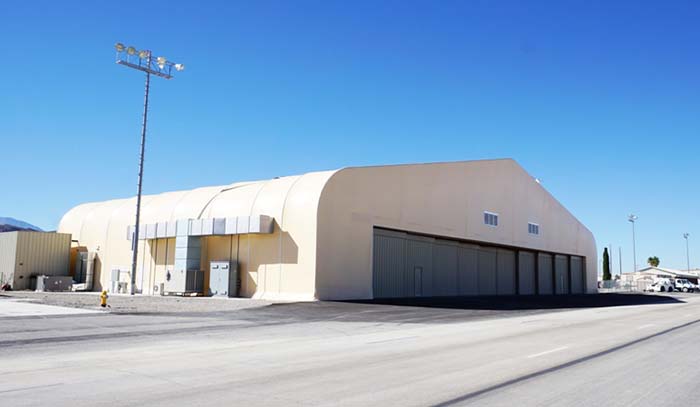How to improve the wind resistance of tension fabric structure?
With its unique shape and light texture, tension fabric structures are widely used in carports, stadiums, sunshade facilities and other fields, adding a beautiful landscape to modern cities. However, in the face of extreme weather conditions such as strong winds, how to improve its wind resistance and ensure the safety and stability of the structure has become an urgent problem to be solved. This article will explore the strategies and practices of improving the wind resistance of tensile fabric structures from the aspects of structural design, material selection, construction and maintenance, and the addition of windproof facilities.

Optimizing structural design
Optimizing structural design is the key to improving the wind resistance of tension fabric structure. In the design process, the influence of wind loads should be fully considered, and streamlined shapes or shapes with good aerodynamic characteristics should be adopted to reduce wind resistance and vortex generation. At the same time, by increasing the number and strength of the supporting structure and optimizing the tension and shape of the membrane surface, the overall stiffness and stability of the structure can be effectively enhanced, so that it can better resist the impact of wind. For example, in the design of fabric structure stands in stadiums, the membrane surface is placed in a constant tension state through form-finding analysis, which can significantly enhance the wind resistance of the membrane surface.
Select high-quality materials
The selection of materials is also crucial. High-quality membrane materials with high strength, wear resistance and anti-aging should be used for tensile fabric structures, such as PVC membrane, PTFE membrane and ETFE membrane. These membrane materials are not easy to tear when subjected to force, especially PTFE membrane, whose tensile strength can reach more than 1000N/5cm, which is enough to cope with the impact of strong winds. In addition, the supporting structure materials should also be made of metal materials such as high-strength steel or aluminum alloy to ensure its bearing capacity and stability.

Strengthen construction and maintenance
Correct construction and regular maintenance are also important links to improve the wind resistance of tension fabric structure. During the construction process, the installation should be carried out strictly in accordance with the design requirements to ensure that the membrane surface is tensioned and the supporting structure is stable. At the same time, the membrane structure should be inspected regularly to promptly detect and repair potential damage or defects, such as membrane surface damage and loose connectors, to prevent the problem from expanding and affecting the wind resistance of the structure. In addition, keeping the membrane structure clean and tidy and avoiding the accumulation of debris can also reduce wind resistance and increase air circulation.
Add windproof facilities
In order to further improve the wind resistance of tensile fabric structures, it is also possible to consider adding windproof facilities. For example, wind pressure release ports or vents are set on the top or side of the carport to reduce the impact of wind pressure on the structure. Or windbreaks, windbreak nets and other windproof facilities are installed to prevent strong winds from directly impacting the fabric structure. These measures can reduce the effect of wind loads on the structure to a certain extent and improve the overall stability of the structure.
Field case verification
In actual applications, the performance of multiple fabric structure projects in extreme weather has verified the effectiveness of the above strategies. For example, in the membrane structure carport of Guangzhou Airport, even under the impact of strong winds exceeding level 11, the structure remains stable without deformation or damage. These cases fully demonstrate the superior performance of tensile membrane structures under strong wind conditions.

In summary, improving the wind resistance of tension fabric structure require multiple aspects, including optimizing structural design, selecting high-quality materials, strengthening construction and maintenance, and adding windproof facilities. Through the implementation of these measures, the wind resistance of fabric structures can be significantly improved to ensure their safety and stability under extreme weather conditions.